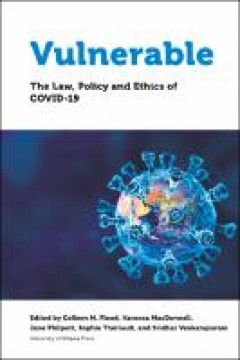Ditapis dengan
E-book The Look of Lyric: Greek Song and the Visual
Do I paint it natural, Susie, so you think how it looks?’ 1 This is the voice of Emily Dickinson, a defiant and uncanny poet of the modern era, referring to her own verbal skills. Quintessentially lyric, especially if one admits that lyric thrives in the gaps and breaches of conventional generic taxonomies, Dickinson was repeatedly testing the boundaries between the verbal and the visual in h…
- Edisi
- -
- ISBN/ISSN
- 9789004314849
- Deskripsi Fisik
- 404 hlm
- Judul Seri
- -
- No. Panggil
- 880 ATH t
E-book The Museum Accessibility Spectrum : Re-imagining Access and Inclusion
Central to the practice of the modern museum sector are the principles of access, inclusion, diversity, sustainability, and community participation (ICOM, 2022). As the curators of our cultural and social histories, the heritage sector is morally and legally required to provide reasonable adjustments to ensure equitable access or all people. The dictionary definition of access is the me…
- Edisi
- -
- ISBN/ISSN
- 9781003382713
- Deskripsi Fisik
- 313 hlm
- Judul Seri
- -
- No. Panggil
- 069 EAR t

E-book Modern France: A Very Short Introduction
In this Very Short Introduction, Vanessa Schwartz argues that modern France, as both a world stage and a global crossroads, is an essential actor in the development of contemporary culture. Indeed, French is the only language other than English spoken on five continents, and more people still visit France than anywhere else in the world. French fashion continues to dominate haute couture and, a…
- Edisi
- -
- ISBN/ISSN
- 9780195389418
- Deskripsi Fisik
- 309 halaman
- Judul Seri
- -
- No. Panggil
- 944 SCH m
E-book Comics and Agency
Approaches tomediating and mediated agencywere first developed in responseto Actor-Network-Theory (ANT), which has been booming since the 1990s (La-tour 2005; Blok et al. 2020), leading to subsequent drafts of an emerging“actormedia theory”(Schüttpelz 2013; Krieger and Belliger 2014; Spöhrer and Ochsner2017). Most existing approaches to mediating and mediated agency, despite allinternal d…
- Edisi
- -
- ISBN/ISSN
- 9783110754483
- Deskripsi Fisik
- 313 hlm
- Judul Seri
- -
- No. Panggil
- 800 AHR c
E-book The Global E-waste Monitor 2020 : Quantities, Flows, and The Circular …
This monitor provides the most comprehensive update of global e-waste statistics. In 2019, the world generated a striking 53.6 Mt of e-waste, an average of 7.3 kg per capita. The global generation of e-waste grew by 9.2 Mt since 2014 and is projected to grow to 74.7 Mt by 2030 – almost doubling in only 16 years. The growing amount of e-waste is mainly fueled by higher consumption rates of EEE…
- Edisi
- -
- ISBN/ISSN
- 9789280891140
- Deskripsi Fisik
- 120 hlm
- Judul Seri
- -
- No. Panggil
- 628.4 FOR t

E-Book Vulnerable : the law, policy & ethics of COVID-19
Vulnerable examines the vulnerabilities and interconnections brought to light by the pandemic, as well as the legal, ethical and public policy responses. This book exposes the vulnerabilities of individuals, institutions, governance and legal structures, in several countries and worldwide.
- Edisi
- -
- ISBN/ISSN
- 9780776636429
- Deskripsi Fisik
- 628 pages
- Judul Seri
- -
- No. Panggil
- 362.1962 FLO v
 Karya Umum
Karya Umum  Filsafat
Filsafat  Agama
Agama  Ilmu-ilmu Sosial
Ilmu-ilmu Sosial  Bahasa
Bahasa  Ilmu-ilmu Murni
Ilmu-ilmu Murni  Ilmu-ilmu Terapan
Ilmu-ilmu Terapan  Kesenian, Hiburan, dan Olahraga
Kesenian, Hiburan, dan Olahraga  Kesusastraan
Kesusastraan  Geografi dan Sejarah
Geografi dan Sejarah